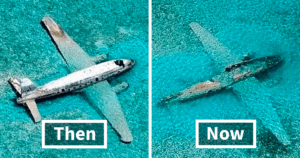“Gravity-Defying Dilemmas: The Ingenious Solutions Astronauts Use to Conquer the Ultimate Space Challenge!”
The UCD remained in use into the early Space Shuttle program, when it was replaced by the Disposable Absorption Containment Trunk or DACT – effectively an advanced set of adult diapers. The DACT was developed in response to NASA’s 1978 opening of the astronaut corps to female candidates, whose anatomy was incompatible with the original UCD. They were first flown in space on April 4, 1983 by the all-male crew of STS-6, the first mission of the Space Shuttle Challenger, while two months later on June 18 they were worn by the United States’ first female astronaut, Sally Ride, during the STS-7 mission. However, NASA quickly realized that the custom-fabricated DACTs were not economical, and that it would be far more cost-effective to purchase commercial off-the-shelf adult diapers. Known as Maximum Absorbency Garments or MAGs, these units replaced the DACT starting in 1988 and contain enough sodium polyacrylate material to absorb two litres of urine or other bodily fluids. They are still worn by American astronauts under their launch entry suits during liftoff and reentry and under their Extravehicular Mobility Units or EMUs during extravehicular activities or “spacewalks” – and for more about the surprising engineering challenges of working out in the hostile vacuum of space, please check out our previous video Touching the Void: the Story of the Space Jet Pack.
At this point in the video, you’ve likely noticed that we’ve left out an important part of the waste-disposal equation. Namely: #2. Yes, that #2. Even more than urine collection, early NASA planners and engineers were loath even to consider the problem of solid waste management, and simply chose to sidestep the issue entirely. After all, early Mercury missions weren’t supposed to last more than a day – and for more on the incredible badassery of the last and longest Mercury mission, please check out our previous video “I’ll do it Myself” – the Greatest Feat of Piloting in Space. However, in order to avoid accidents, in the days leading up to a mission astronauts were fed a “low residue” diet high in protein and low in fibre – for example steak and eggs, which has since become the traditional pre-flight breakfast for American astronauts. This diet also minimizes the production of intestinal gases, which in the reduced atmospheric pressure of a spacecraft cabin can expand and produce severe pain. Even today, Russian cosmonauts follow a similar practice. Though the Soyuz spacecraft typically takes only a few hours to reach the International Space Station, depending on orbital maneuvers crews can sometimes spend several days in orbit before docking. And while the Soyuz does feature a rudimentary space toilet – more on that later – cosmonauts don’t like to use it, and will often combine their low-residue diet with a pre-flight enema to completely clean out their bowels.












